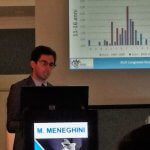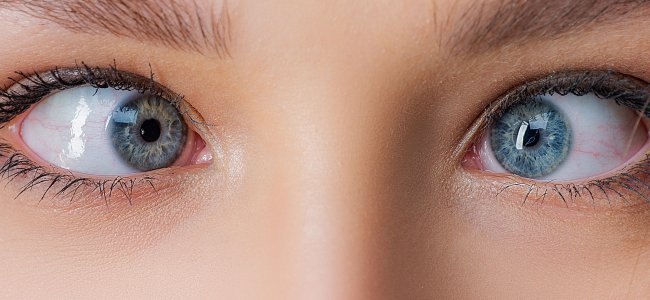Stuttering: what is it, symptoms, and how to deal with it

Stuttering is a disorder of speech fluency. Those who run into this problem know precisely what they want to say, but, at the same time, it is impossible to do so because of interruptions, involuntary repetitions of syllables or words, or extension of sounds. Each of these “obstacles” presents itself with a character of total unwillingness.
It can happen that, at the onset of such “obstacles”, movements develop, often wrongly recognized as tic; conversely, these movements are nothing more than the attempt to “force” the motor block associated with this speech disorder. With the passage of time you are acquiring a certain habit to perform such movements, resulting in a loss of awareness. These movements manifest themselves in a state of tension or excitement, generally associated with emotions such as fear, embarrassment, or frustration.
Another main symptom occurs when pronouncing difficult; some people are able to hide their stutter by avoid using a few words: in this case we are faced with the, so-called, latent stutter.
About 3% of preschool children (mainly males) are affected by this issue.
How to distinguish it from a physiological dysfluency
It remains important to make a distinction between these two pathologies; stuttering involves extensions and repetitions that are not associated with a dysfluency. At a young age (usually within four years of age) are in fact to be considered physiological hesitations, extensions, and interruptions.
To recognize a physiological dysfluency from the one present in a stutterer, we must pay attention to how the dysfluency occurs (frequency, location, and duration). In the stuttering child, fluency disorder is manifested by repetitions and extensions of some parts of the word with greater frequency than pauses and revisions (e.g. “pa-pa-word” rather than “pa-word”). If the disorder persists in a pre-schooler, it is advisable to seek professional advice.
Before we continue here is an animated video posted by BSVStottervereniging that explains this language dysfunction in a creative way.
Different forms of stuttering
We can distinguish several forms of said pathology:
- tonic: stop at the beginning of the sentence by lengthening the syllable or showing phoneme difficulties;
- clonic: with repetition of the syllable;
- mixed: in this case we find both stretching and repetition, so communication becomes extremely hindered.
The symptoms of stuttering
This problem is diagnosed with abnormalities in a child’s speech that are inappropriate for the language skills he should have in relation to his age. Among the alterations of language we find:
- repetitions of sounds or syllables;
- extension of consonant sounds or vowels;
- word breaks;
- audible or silent blocks;
- circumlocutions;
- words spoken with excessive physical tension;
- repetition of whole monosyllabic words.
Causes
There is still no certainty on what the causes are, but it is commonly accepted that they are not to be found in a purely psychological phenomenon. Rather, according to recent studies, it tends to link the onset of this problem with a difficulty of motor control of speech production, thus involving the neural mechanisms and sense-motors involved in the control and coordination of speech movements. This speech disorder is therefore considered a disturbance of the speech motor system.
A study, published in Proceedings of the National Academy of Sciences, researchers from the National Institute on Deafness and Other Communication Disorders (NIDCD) discovered and analysed which brain cells are related to stuttering in mice. This study started to decipher the neuropathology of this speech disorder.
How to deal with stuttering in children
The parents of the child subject to this type of fluency disorder are the first ally to seek to provide concrete help to the child. The acceptance of the problem is of fundamental importance, and this prevents it from further aggravations. It is important to listen to the child and give him time to complete words and phrases without looking impatient or bored, as well as showing interest in what the child says.
Completing the words instead of letting the child finish, can be detrimental; this practice only creates more frustration and undermine the self-esteem of the child (with a direct consequence of the worsening of the problem).
Where can you seek help?
If your child shows these signs, a specialist assessment is necessary. We are present at a “frontier pathology” able to intersect multiple areas and professional figures such as:
- neurologist;
- psychologist;
- speech therapist;
- paediatrician.
My professional experience
When I graduated in speech therapy in the late ’80s, the therapy for stuttering was based purely on the correct respiratory dynamics, that is, diaphragmatic dynamics, followed by a syllabic speech cadenced by the rhythm of the metronome. Everything was very rigid, the patient went from the bed where they performed the breathing exercises, to the chair where they started talking following the rhythm of the metronome.
It started off very slowly and then gradually increased the speed making the language somewhat mechanical. The results were not always satisfactory. Oftentimes we could see improvements, but they were not always definitive. Over time other techniques have enriched the treatment course.
These include hyper articulation, joining the last vowel of a word to the next word and others. I read books, I took training courses, I tried to offer the best to my patients but I realized that there was always a piece of the puzzle that was missing.
Every patient, after a few years (or more) of therapy, improved, but told me that they continued to be scared of approaching or talking to others. They suddenly felt the block rise and described the typical and characteristic signs of the panic crisis: sweating, tachycardia, feeling of vertigo.
A new methodology
For over 15 years, using the studies and support of other professionals, I dedicated myself to study, observe and test a methodology that could be more effective and allow to obtain significant results in the treatment of adult stuttering also with regard to the problem of social distress.
The studies, the degree in psychology and the knowledge of the brief strategic therapy of Professor Giorgio Nardone, then allowed me to also work on the dynamics of social avoidance due to the experience of the communicative discomfort of stutterers.

You are free to reproduce this article but you must cite: emianopsia.com, title and link.
You may not use the material for commercial purposes or modify the article to create derivative works.
Read the full Creative Commons license terms at this page.








